- Home
- Carolyn Keene
Mystery by Moonlight Page 7
Mystery by Moonlight Read online
Page 7
She wasn’t sure what to do. Part of her was eager to visit the museum, but what if she ran into Jim? She hesitated for a minute. She wasn’t going to let that guy’s nasty attitude stop her from going.
Nancy walked through the open door into a spacious foyer lined with display cases. She continued on to a large open room. Along the walls were ancient and contemporary local native crafts—mainly Lenape. But Nancy’s attention was quickly drawn to a diorama setup on a huge round table in the center of the room.
Posted at the front of the table was a simple sign. It read, BEFORE THE FLOOD. Nancy’s curiosity soared when she realized it was a skillfully crafted reproduction of the valley in 1924.
Nancy quickly located the north shore. Sure enough, the diorama was so detailed, she easily located what must have been the whole Malone property. As Ravi said, it bordered a large beaver pond. The valley below was a regular patchwork of farms with fields, barns, and farmhouses. Small hamlets with church spires and tiny streets punctuated the sparsely populated landscape.
The Malone property bordered what was labeled as Lenape land. It was a small tract, but it ran right through the current dividing line between Emily’s house and Camp Moonlight. And all of Camp Moonlight had originally belonged to the Lenape people. Malone’s little compound showed the big house, the guest house, a toolshed—but no boathouse.
“That’s the before picture! Now, how about the after!” a tight voice commented.
Nancy turned. “Jim!” she said, forcing back a wave of anger.
“We keep running into each other,” he said, folding his arms across his chest. His whole being was a challenge to her—but Nancy decided not to be challenged. She was too curious about the valley and this diorama.
“This museum’s pretty impressive,” she said.
As she had hoped, her comment disarmed him slightly. “Now that I’m permanent staff, we have one full-time curator, then me and two assistants. We’re getting things together, slowly but surely,” he said, a note of real pride in his voice. “When my boss gets back from vacation, I’ll be able to work full-time on ‘Part Two’ of this one.”
“ ‘Part Two’ is after the flood?” Nancy asked, immediately wanting to bite back her words as she realized Jim thought she was mocking him.
“Yeah, what else,” Jim said, tensing up again. “If you’re interested, it’s in the next room. It’s still pretty much a work in progress.”
Nancy was surprised at his offer, and quickly took him up on it. He led her into a room that abutted the Historical Society’s half of the building. A broad, open arched doorway separated the two institutions.
“Now, this should look more familiar,” he said, drawing back a protective cloth from the top of a large display table.
The whole north shore of the lake looked pretty complete to Nancy, though the east, west, and south shores were still blocked out with brown terraform material and lots of Post-it notes. Nancy quickly spotted the Fayne cottage, Emily’s house, Camp Moonlight, and then on the other side of the Faynes’, a nearly completed model of the Lawrence-Joneses’ cabin. Map locator pins dotted parts of the forest, the grounds of Camp Moonlight, the Fayne cottage, and Emily’s yard. Some of the pins went right down into the replicated lake.
“What are these?” she asked Jim.
“None of your business,” he snapped.
Nancy rolled her eyes. This guy kept acting as if she were personally responsible for flooding the valley and disturbing his ancestral lands. “What’s with you?” she started to ask but just then a woman poked her head through the door to the Historical Society’s side of the building.
“I’m back, Jim. I’m officially open now. You don’t need to watch the shop,” the woman said.
Jim gave her a thumbs-up and walked away from Nancy.
The whole reason Nancy had come to town was to check out the Historical Society. “Excuse me, but I actually came here to check out some of your records,” Nancy said to the woman.
“Of course. Come in. Sorry I was still at lunch—but I hope Jim kept you entertained,” the woman said, flicking on the lights in the front room. Before tucking her purse inside her desk, she pulled out her compact and checked her hair. She was an attractive woman with a friendly smile.
Nancy decided not to respond to her remark about Jim. “My name’s Nancy Drew, and I’m staying with friends at the cottage on the old Malone property on the north shore.”
“Mike Malone’s old place? Yes, I know the cottage. It’s charming! I hear a young couple bought it about a year or so ago. And then the Malone house itself just got sold after being on the market for a good five years. Amazing—when things start happening, they happen fast,” she babbled on. “Oh, by the way, my name’s Karen Kopekski. I more or less run this place, together with a really great committee of volunteers.”
Nancy smiled. She’d have to talk fast to get a word in edgewise; Karen was such a talker. “Anyway,” Nancy said, unzipping her knapsack, “I found these letters in the cottage last night. Apparently there’s a secret stairway in the house that leads to a—”
“You don’t say!” Karen looked thrilled.
“To a crawl space,” Nancy continued. “I went through the letters a bit last night. They were all written by Mike Malone, but I wondered if your records here could shed some light on them.”
“Oh my, those would be of great interest to the Society,” Karen said. “Mike Malone is a real local celebrity. In fact, there have been rumors circulating for years that he’s still haunting the old main house. Of course, that’s only if you believe in ghosts. But if you do”—Karen giggled—“there are supposedly at least ten of them wandering around the north shore. Why the ghosts of farmers who lived twenty-five miles away down in the valley would bother to haunt the north shore is beyond me. Back in the mid-twenties, it was mainly Native American land. Traveling twenty-five miles in these parts was quite an excursion.”
“Would you tell me how the local Native American groups feel about Moonlight Lake now?” Nancy asked.
Karen shrugged. “Mostly just like everyone else. They use it for recreation: boating, fishing, water sports. There are a few who still resent the way the tribal lands were more or less ripped out from under them by the powers behind the hydroelectric projects.”
“People like Jim?”
“Yes, but at least he’s channeled his anger in good directions. He’s going through the courts trying to get property owners on this side of the lake to set aside a small area—a memorial really—to the native people who lived in the region for hundreds of years before the white man came.”
Nancy wanted to learn more about Jim’s project, but she could see that Karen was eagerly eyeing the packet of letters.
“Can we look at those now?” Karen asked, pulling a second chair up to the desk and putting on a pair of reading glasses.
Nancy sat down, and for a good twenty minutes they pored over the letters.
“Now, this is interesting,” Karen said, in a serious voice. “Back here in 1923, Malone’s written something about plans for a boathouse, and a chance for serious boating coming up. . . . ”
“What’s wrong with that?” Nancy asked.
Karen peered at Nancy over her glasses. “Well, he doesn’t spell it out, Nancy, but I think Malone had foreknowledge of the flooding of the valley. The plans were top-secret until late in 1924. The minute they were made public, a huge controversy erupted. But since this was a poor, underpopulated area, the power company and state won easily.”
Nancy leaned back and thought a moment. “Malone was a mobster, notoriously in cahoots with corrupt politicians. He probably had inside knowledge of lots of things.”
“But what’s even more interesting is that he mentions plans. Our town archives have plans dating from the last years of the nineteenth century. Come on, let’s look and see what we can find.”
Nancy jumped at the chance. Karen took Nancy into the Historical Society’s library. Plans were st
ored in large wooden flat-files, sorted first by date, then title of property. They searched several years before 1923 and after 1925 but they couldn’t find the plans.
Karen was visibly disappointed. “I so hoped to find them. You know, Jim’s 1924 diorama has no boathouse—but now we have no idea when it was built. A builder would have had to file plans.”
“Malone might not have wanted to tip his hand that he knew about the flooding of the valley ahead of time,” Nancy reasoned. “And maybe he didn’t have to file plans. He certainly had the connections to build a boathouse without the locals objecting.”
“Do you think the plans are still in the house?” Karen asked.
“I don’t know. They weren’t with the letters. . . . ” Nancy thought for a moment. Had they been under that pried-up plank in the pantry? The space was narrow but long, and a tube of rolled up architectural drawings could have easily fit there.
Karen suddenly looked up past Nancy’s shoulder. “Jim, how long have you been standing there?” she asked pleasantly.
“Didn’t want to interrupt you guys,” he said. He had a definite smirk on his face. How much had he heard?
“I’m heading to lunch now,” he said, his voice neutral. “So if you would keep an eye on things . . . ”
“Of course, Jim. You just go on ahead.” Karen waved him away.
As he left the room, Nancy noticed he was wearing the same sheathed knife in his belt and was carrying the same sort of burlap sack over his shoulder that she’d seen in the back of his truck the day before.
• • •
Nancy drove home, her mind reeling from the wealth of new information. Her first thought was of Jim. How long had he been eavesdropping? She tried to tell herself she was being paranoid about him; after all, except for his attitude and bad driving habits, he hadn’t done anything truly suspicious.
Or had he? His reaction to her question about those locator tacks on the post-flood diorama had been pretty extreme. He didn’t want her to know whatever they stood for. And that smirk on his face when Karen discovered him listening at the library door—Nancy’s gut instinct told her the guy knew something about that boathouse, if not the letters.
When Nancy got back to the cottage, Bess, George, and Ned were still out boating with Ravi. After downing a glass of milk and a couple of cookies, Nancy decided to go find Emily and tell her what she found out about the history of the boathouse and the Malone property.
As she headed outside, she saw the hauling and excavation truck parked in the driveway. She walked around the various sheds and outbuildings, but didn’t see Emily anywhere. She was probably off with Dale and Kevin, supervising some project.
Passing the boathouse, Nancy noticed that the door was open. She looked inside. “Emily, you there?” she called. But a quick look around revealed that the place was empty. Two cups of coffee sat on a workbench. Nancy went over and touched the cups; they were still warm. Strange, she thought.
Nancy decided to come back later, but as she started to leave, she caught sight of a plank straddling two sawhorses. Tacked to the plank were some sort of architectural drawings. Probably renovation plans. Curious, she went to take a closer look.
Up close, she could see that the paper was old, and the plans seemed hand-drawn—much like several of the plans she’d looked at with Karen back at the Historical Society library.
Leaning closer, she saw the architect’s signature, and the date in the lower right-hand corner read: SEPTEMBER, 1923.
Nancy couldn’t believe her eyes! Was this the plan for the boathouse that Mike Malone had never filed? Suspicion surged in Nancy’s mind, but she took a breath. Emily had every right to these plans. She probably found them in her own house, and was using them to guide her renovations.
As Nancy studied the plans, something struck her as odd. Little arrows were drawn from the beach of the cottage, from the dock of the main house, and from the lawn, down into the water. Other arrows pointed to a corner of the boathouse itself, the part that seemed to have been badly damaged over the years. Nancy had noticed yesterday how the stones along one corner had been pulled out, and how that corner of the boathouse was propped up with some type of beam.
Nancy looked more closely at all the arrows: they were drawn in ballpoint pen—a kind of pen that didn’t exist in 1923. Closer inspection revealed they were carefully traced over faded pencil marks.
What did those arrows mean?
The thought had barely formed in her mind when suddenly a strong, calloused hand gripped her wrist hard and shoved her to the ground. As her head struck the corner of the table, Nancy blacked out.
11
A Familiar Prowler
She slowly surfaced back to consciousness and felt the touch of cool hands on her face.
“Nancy!” A vaguely familiar voice was calling her name.
Nancy opened her eyes and found herself looking up into Emily’s face. The woman looked pale and scared half to death. “I’m okay, Emily. Really.” Nancy started to sit up. The movement made her stomach lurch, but she fought back the wave of nausea. Holding Emily’s arm, she slowly managed to get to her feet. She wasn’t quite sure where she was—some sort of shed.
“What in the world happened?” Emily asked, guiding Nancy over to an upturned barrel. Nancy sat down and massaged her temple. She had fallen somehow and hit her head.
Careful to move slowly, Nancy looked around. Gradually, the room came into focus. Broken glass littered a windowsill. Coils of old rope, oars, and life jackets hung on the walls. I’m in the boathouse, she realized. Suddenly everything rushed back to her. She’d been looking at old boathouse plans when someone had grabbed her from behind. She could still feel the calloused hands on her wrist. Whoever it was knocked her down—or knocked her out.
She stood up slowly. For a moment the walls of the boathouse seemed to spin.
“You don’t look so good,” Emily warned.
“I’m okay. I just remembered what happened,” Nancy said in a sober tone. “Emily, I was looking at the boathouse plans, when someone came up behind me and knocked me out.”
“Boathouse plans?” Emily asked.
Nancy pointed to the sawhorses and the old plank door that served as a work surface. The plans were gone. “He must have made off with them.”
Emily’s eyes widened. “I don’t believe this,” she gasped in horror. “Why in the world would someone steal those?” She exhaled forcefully and marched over to the boathouse door. When she turned to face Nancy she looked like she was about to cry. “That means I have to have them redrawn. My budget’s so tight, but I’ve already contracted the work—”
“Why would someone want those plans?” Nancy asked.
“Beats me,” Emily said. “Except maybe to cause me trouble. Everyone and his uncle around here knows I spent too much for this place and is waiting for me to default on the mortgage.”
“But that doesn’t mean people want to cause you that much grief,” Nancy said.
“You wouldn’t think so, would you?” Emily plunked herself down on the barrel and buried her face in her hands for a moment. “But there seems to be an army of people who resent my being here. I just try to ignore them and pretend they don’t exist,” she said slowly. “First of all, there’s that guy from the Native American museum, Jim. He’s been causing grief for everyone on the north shore. He seems to think present landowners owe his ancestors something for having bought the land. He hassles everyone and is always creeping around the woods—even if he’s trespassing on other people’s land. I keep finding these weird piles of stones all over the place. The other day there was one on my lawn. Dale told me they give him the creeps and mumbled something about spirit totems. The guy’s weird, and he’s mad at everyone who lives here.”
“I think I know what you’re talking about,” Nancy said. Had Jim been building some kind of spirit cairn when she and Ned ran into him in the woods?
“Then there’s Steve Delmonico,” Emily said. “He’s
furious I bought this place out from under him, even though he was taking forever to decide to buy. He’d love to see me fail here, believe me. He’s ready to jump in and buy the place from the bank.”
“I heard about that,” Nancy told her. “And have you had any trouble with George and Bess’s neighbors? The Lawrence-Joneses are upset about all the commotion on the lake this summer. They keep talking about boats paddling around at night disturbing the geese. And some kind of drilling noise.”
Emily snapped to attention. “Drilling?” Her voice sounded strained.
“Yeah—I haven’t heard it myself, but the past two nights . . . ” Nancy shook her head. “So much has gone on, I might not have noticed.”
“I’m not sure what they’re talking about. Maybe something over at the camp. I guess I sleep too soundly to hear,” Emily said. Then she looked at Nancy. “You’re looking better. Hey—how come you were here, in the boathouse, anyway?”
Nancy laughed. “I came looking for you. I spent the morning at the Lost Valley Historical Society and wanted to tell you what I found out about the boathouse and the old Malone property. I thought you might be able to fill in some of the blanks.” She reached for her backpack. “And because of these!” She produced the bundle of letters. The burglar hadn’t been interested in Nancy’s backpack or wallet—just in the plans. Nancy decided she’d think about that later. She handed the letters to Emily.
“Look what I found in the cottage. Turns out there’s this secret crawl space that was never in the cottage plans. It has two hidden entrances.”
Emily stared at the bundle. When she looked back up at Nancy, her face was flushed. “I-I don’t understand. What do these have to do with me?”
Nancy frowned. Emily’s reaction wasn’t quite what she’d expected.

 The Purple Fingerprint
The Purple Fingerprint The Picture of Guilt
The Picture of Guilt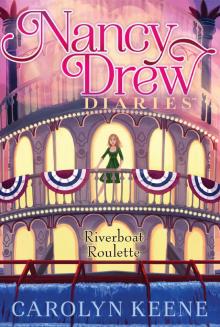 Riverboat Roulette
Riverboat Roulette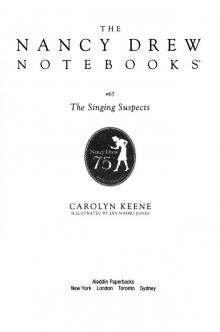 The Singing Suspects
The Singing Suspects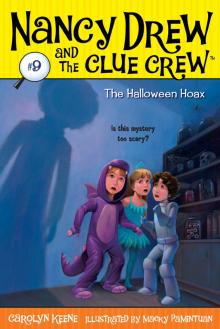 The Halloween Hoax
The Halloween Hoax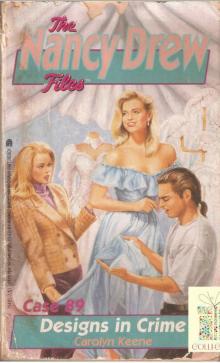 089 Designs in Crime
089 Designs in Crime The Hidden Treasures
The Hidden Treasures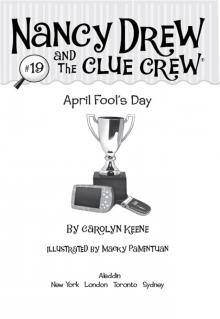 April Fool's Day
April Fool's Day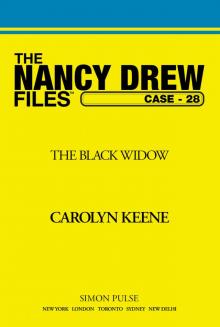 The Black Widow
The Black Widow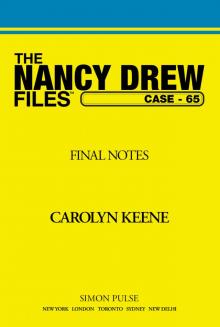 Final Notes
Final Notes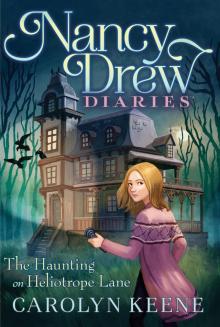 The Haunting on Heliotrope Lane
The Haunting on Heliotrope Lane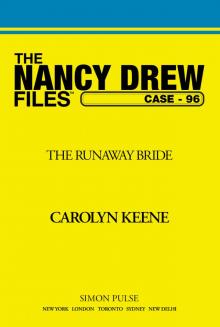 The Runaway Bride
The Runaway Bride The Ghost of Grey Fox Inn
The Ghost of Grey Fox Inn The Hidden Staircase
The Hidden Staircase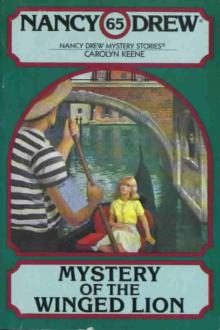 Mystery of the Winged Lion
Mystery of the Winged Lion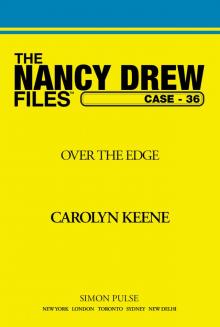 Over the Edge
Over the Edge The Circus Scare
The Circus Scare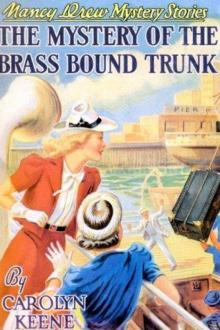 The Mystery of the Brass-Bound Trunk
The Mystery of the Brass-Bound Trunk Ski School Sneak
Ski School Sneak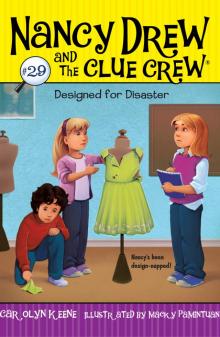 Designed for Disaster
Designed for Disaster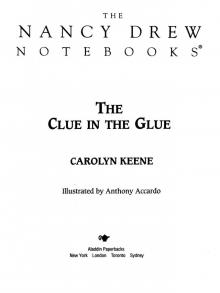 The Clue in the Glue
The Clue in the Glue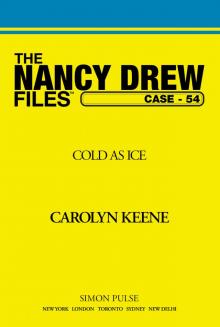 Cold as Ice
Cold as Ice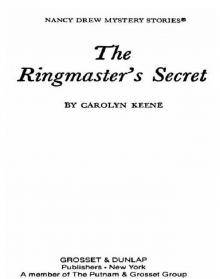 The Ringmaster's Secret
The Ringmaster's Secret 013 Wings of Fear
013 Wings of Fear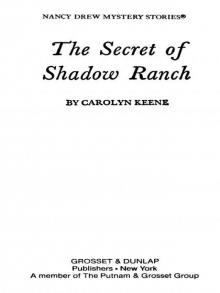 The Secret of Shadow Ranch
The Secret of Shadow Ranch Not Nice on Ice
Not Nice on Ice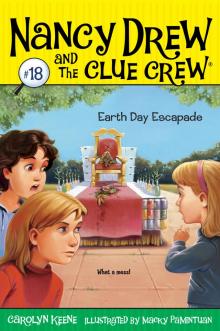 Earth Day Escapade
Earth Day Escapade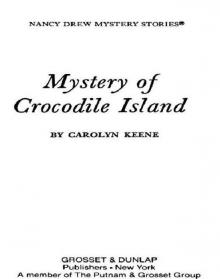 Mystery of Crocodile Island
Mystery of Crocodile Island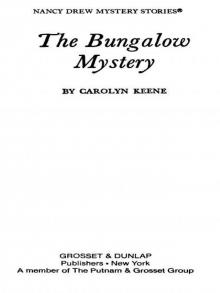 The Bungalow Mystery
The Bungalow Mystery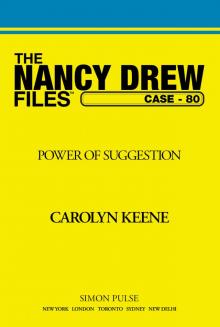 Power of Suggestion
Power of Suggestion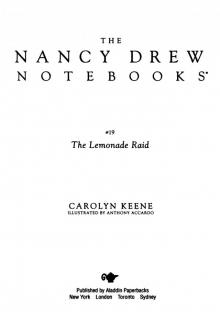 The Lemonade Raid
The Lemonade Raid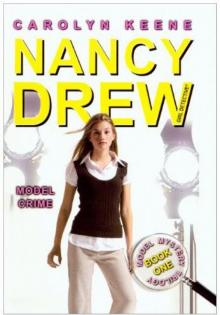 Model Crime
Model Crime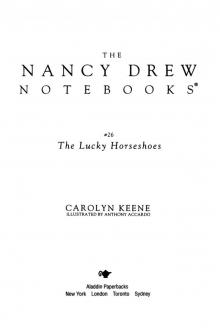 The Lucky Horseshoes
The Lucky Horseshoes The Secret of the Old Clock
The Secret of the Old Clock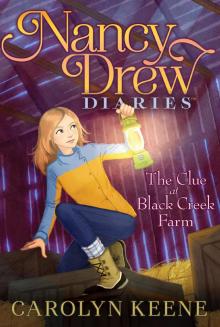 The Clue at Black Creek Farm
The Clue at Black Creek Farm Pure Poison
Pure Poison Nobody's Business
Nobody's Business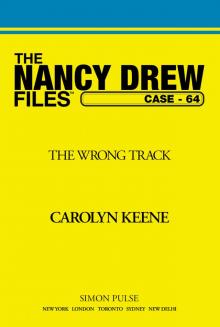 Wrong Track
Wrong Track Chick-Napped!
Chick-Napped!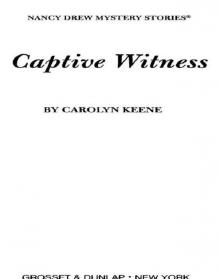 Captive Witness
Captive Witness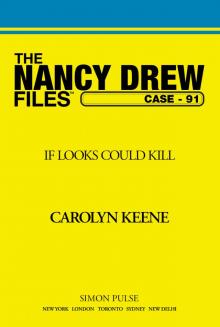 If Looks Could Kill
If Looks Could Kill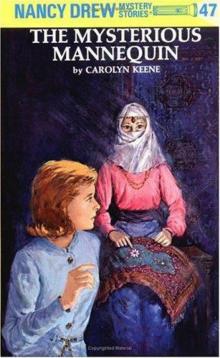 The Mysterious Mannequin
The Mysterious Mannequin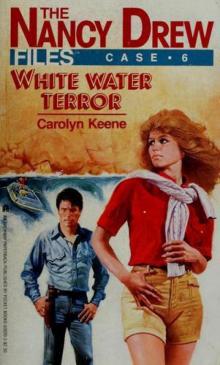 White Water Terror
White Water Terror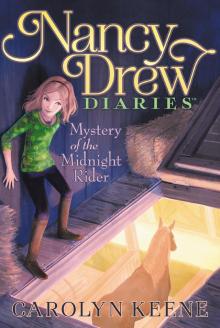 Mystery of the Midnight Rider
Mystery of the Midnight Rider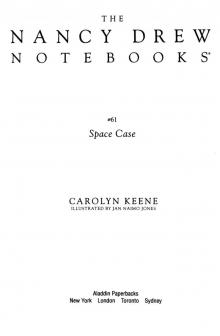 Space Case
Space Case World Record Mystery
World Record Mystery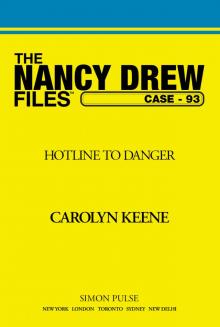 Hotline to Danger
Hotline to Danger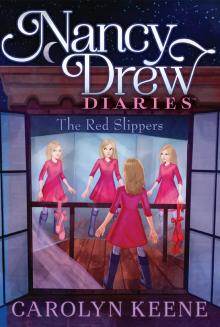 The Red Slippers
The Red Slippers A Crime for Christmas
A Crime for Christmas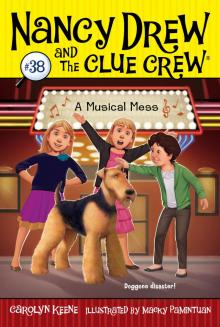 A Musical Mess
A Musical Mess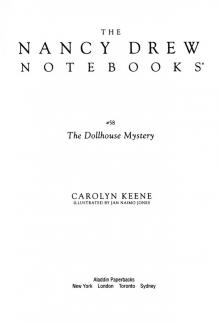 The Dollhouse Mystery
The Dollhouse Mystery Portrait in Crime
Portrait in Crime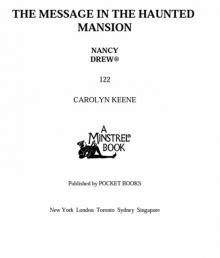 The Message in the Haunted Mansion
The Message in the Haunted Mansion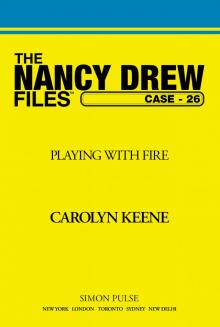 Playing With Fire
Playing With Fire Mystery of the Tolling Bell
Mystery of the Tolling Bell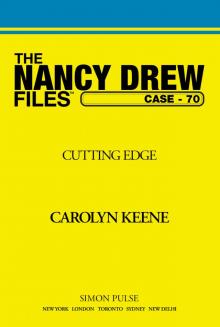 Cutting Edge
Cutting Edge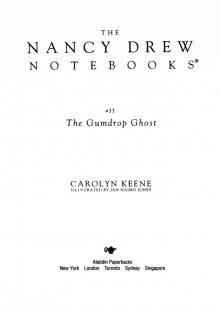 The Gumdrop Ghost
The Gumdrop Ghost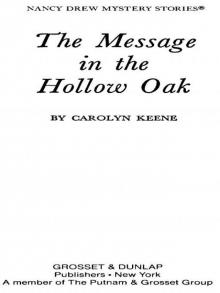 The Message in the Hollow Oak
The Message in the Hollow Oak Trial by Fire
Trial by Fire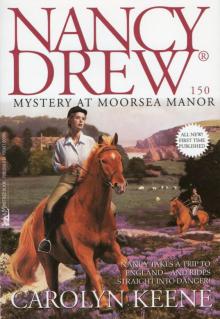 Mystery at Moorsea Manor
Mystery at Moorsea Manor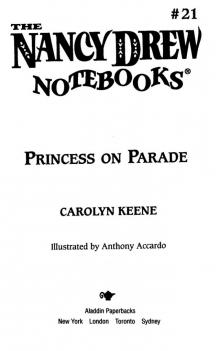 Princess on Parade
Princess on Parade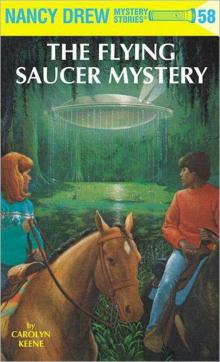 The Flying Saucer Mystery
The Flying Saucer Mystery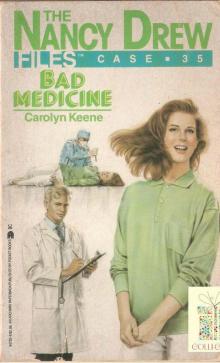 035 Bad Medicine
035 Bad Medicine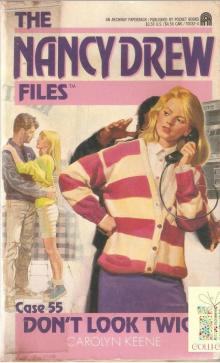 055 Don't Look Twice
055 Don't Look Twice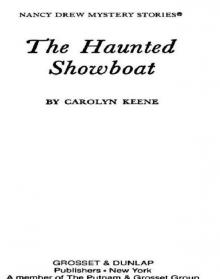 The Haunted Showboat
The Haunted Showboat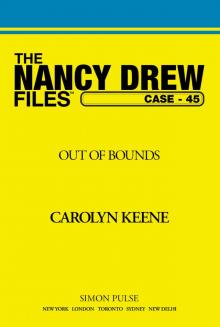 Out of Bounds
Out of Bounds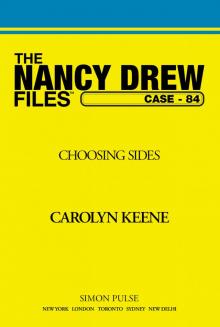 Choosing Sides
Choosing Sides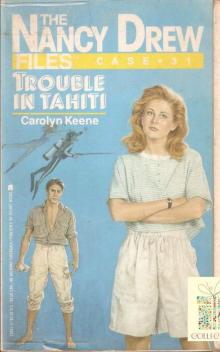 031 Trouble in Tahiti
031 Trouble in Tahiti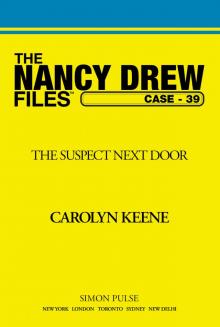 The Suspect Next Door
The Suspect Next Door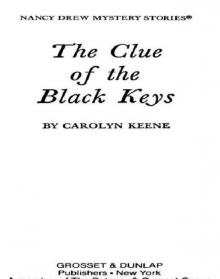 The Clue of the Black Keys
The Clue of the Black Keys The Secret Santa
The Secret Santa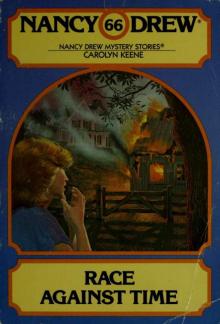 Race Against Time
Race Against Time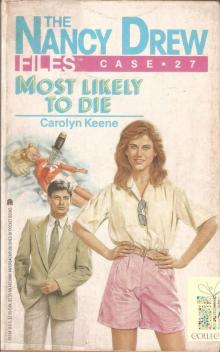 027 Most Likely to Die
027 Most Likely to Die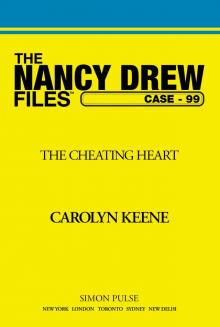 The Cheating Heart
The Cheating Heart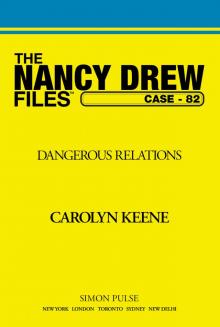 Dangerous Relations
Dangerous Relations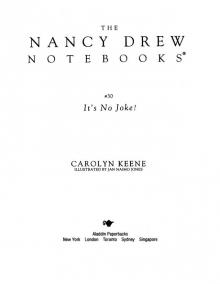 It's No Joke!
It's No Joke!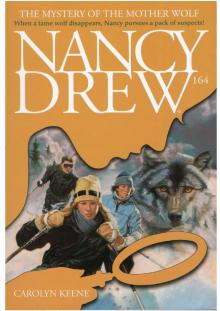 The Mystery of the Mother Wolf
The Mystery of the Mother Wolf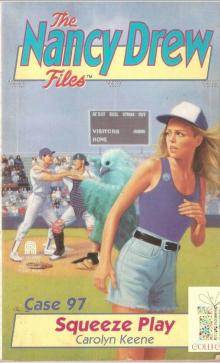 097 Squeeze Play
097 Squeeze Play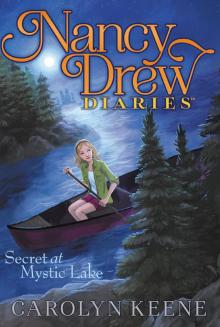 Secret at Mystic Lake
Secret at Mystic Lake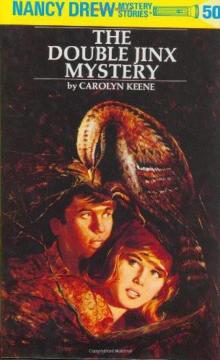 The Double Jinx Mystery
The Double Jinx Mystery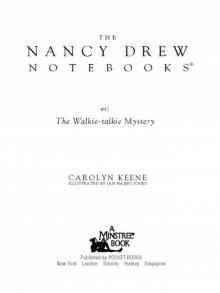 The Walkie Talkie Mystery
The Walkie Talkie Mystery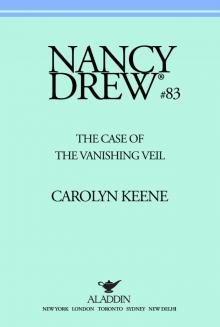 The Case of the Vanishing Veil
The Case of the Vanishing Veil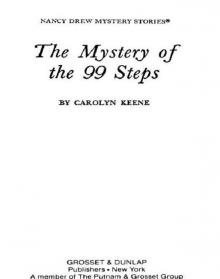 The Mystery of the 99 Steps
The Mystery of the 99 Steps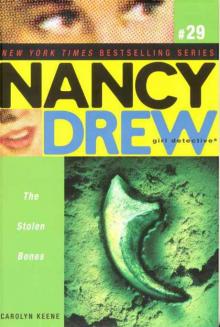 The Stolen Bones
The Stolen Bones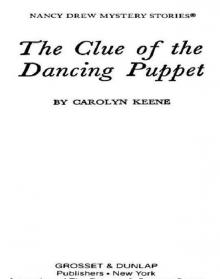 The Clue of the Dancing Puppet
The Clue of the Dancing Puppet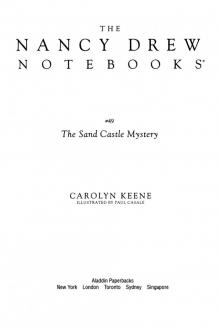 The Sand Castle Mystery
The Sand Castle Mystery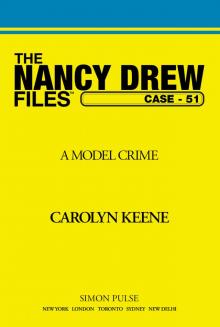 A Model Crime
A Model Crime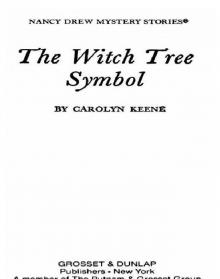 The Witch Tree Symbol
The Witch Tree Symbol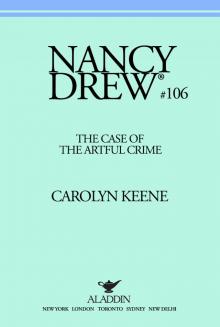 The Case of the Artful Crime
The Case of the Artful Crime Mall Madness
Mall Madness Swiss Secrets
Swiss Secrets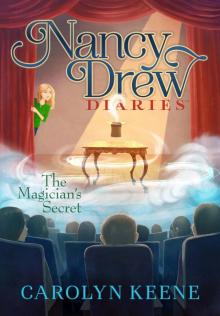 The Magician's Secret
The Magician's Secret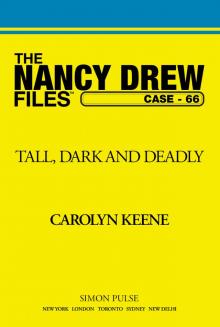 Tall, Dark and Deadly
Tall, Dark and Deadly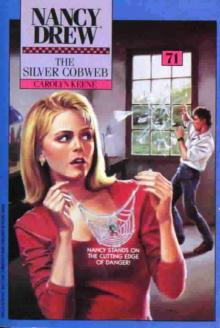 The Silver Cobweb
The Silver Cobweb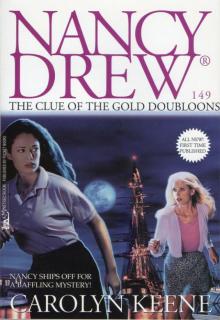 The Clue of the Gold Doubloons
The Clue of the Gold Doubloons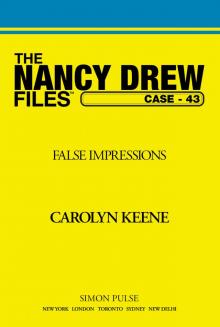 False Impressions
False Impressions Model Suspect
Model Suspect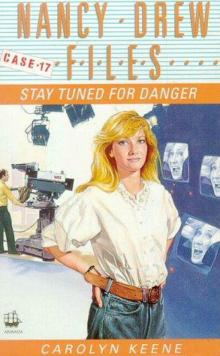 Stay Tuned for Danger
Stay Tuned for Danger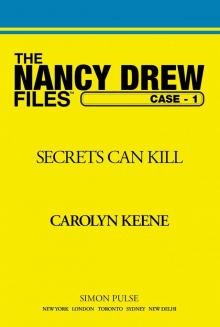 Secrets Can Kill
Secrets Can Kill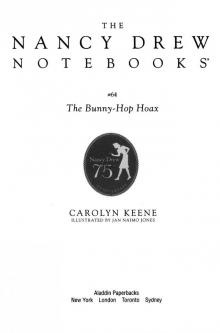 The Bunny-Hop Hoax
The Bunny-Hop Hoax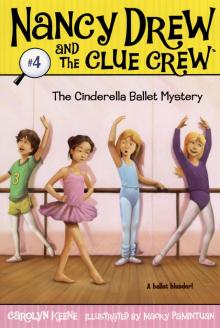 The Cinderella Ballet Mystery
The Cinderella Ballet Mystery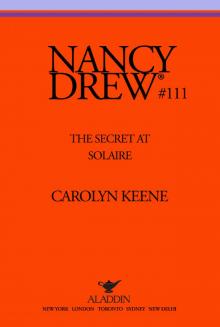 The Secret at Solaire
The Secret at Solaire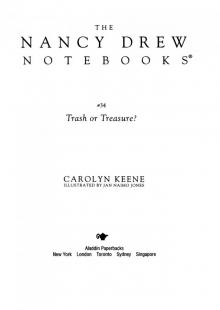 Trash or Treasure?
Trash or Treasure? The Missing Horse Mystery
The Missing Horse Mystery The Lost Locket
The Lost Locket The Secret of the Wooden Lady
The Secret of the Wooden Lady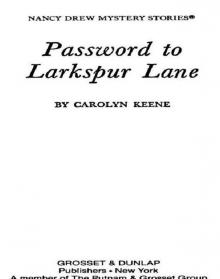 Password to Larkspur Lane
Password to Larkspur Lane Movie Madness
Movie Madness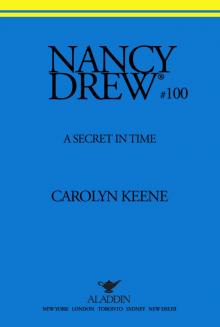 A Secret in Time
A Secret in Time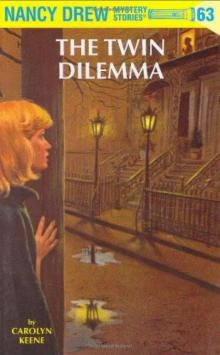 The Twin Dilemma
The Twin Dilemma Candy Is Dandy
Candy Is Dandy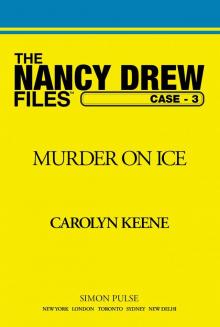 Murder on Ice
Murder on Ice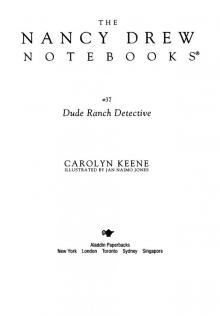 Dude Ranch Detective
Dude Ranch Detective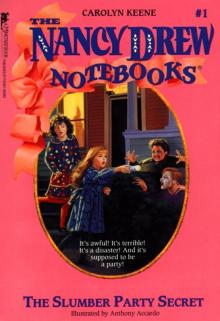 The Slumber Party Secret
The Slumber Party Secret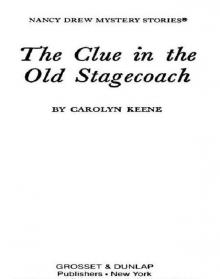 The Clue in the Old Stagecoach
The Clue in the Old Stagecoach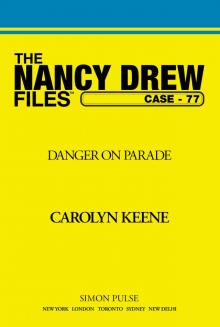 Danger on Parade
Danger on Parade Big Top Flop
Big Top Flop Strangers on a Train
Strangers on a Train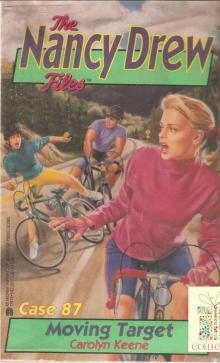 087 Moving Target
087 Moving Target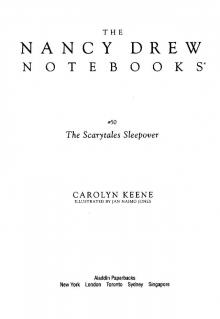 The Scarytales Sleepover
The Scarytales Sleepover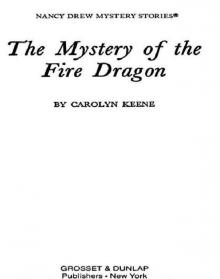 The Mystery of the Fire Dragon
The Mystery of the Fire Dragon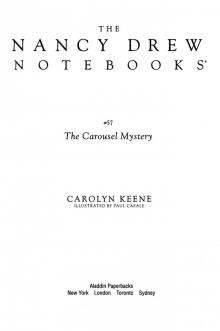 The Carousel Mystery
The Carousel Mystery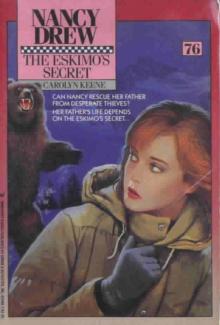 The Eskimo's Secret
The Eskimo's Secret Thrill on the Hill
Thrill on the Hill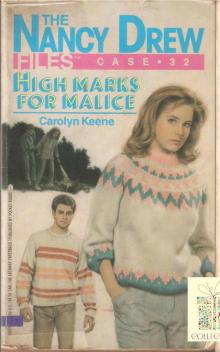 032 High Marks for Malice
032 High Marks for Malice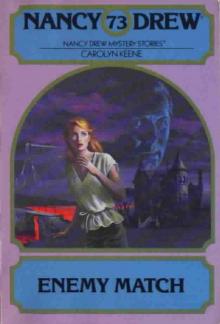 Enemy Match
Enemy Match Poison Pen
Poison Pen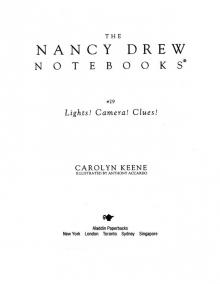 Lights, Camera . . . Cats!
Lights, Camera . . . Cats! Lost in the Everglades
Lost in the Everglades Strike-Out Scare
Strike-Out Scare Third-Grade Reporter
Third-Grade Reporter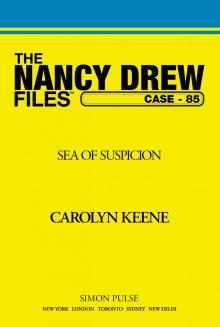 Sea of Suspicion
Sea of Suspicion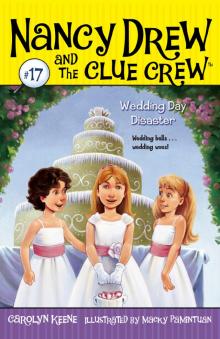 Wedding Day Disaster
Wedding Day Disaster The Make-A-Pet Mystery
The Make-A-Pet Mystery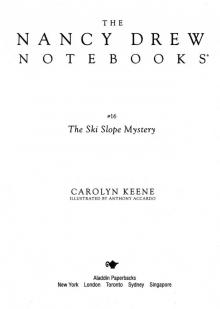 The Ski Slope Mystery
The Ski Slope Mystery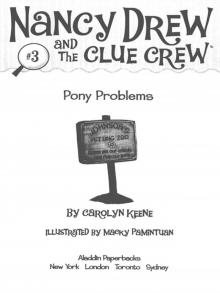 Pony Problems
Pony Problems Candy Kingdom Chaos
Candy Kingdom Chaos The Sign in the Smoke
The Sign in the Smoke The Wrong Chemistry
The Wrong Chemistry Circus Act
Circus Act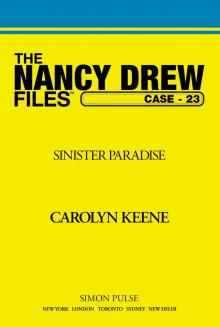 Sinister Paradise
Sinister Paradise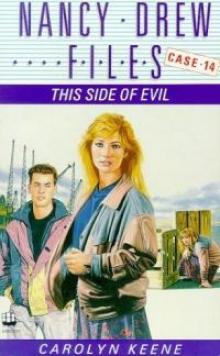 This Side of Evil
This Side of Evil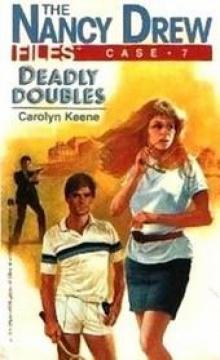 Deadly Doubles
Deadly Doubles The Mystery of the Masked Rider
The Mystery of the Masked Rider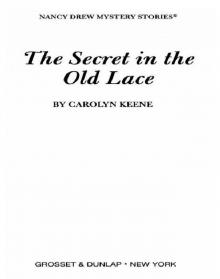 The Secret in the Old Lace
The Secret in the Old Lace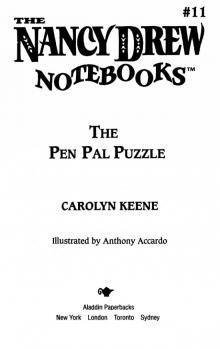 The Pen Pal Puzzle
The Pen Pal Puzzle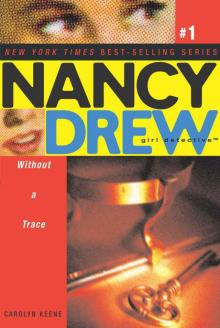 Without a Trace
Without a Trace Whose Pet Is Best?
Whose Pet Is Best? Dance Till You Die
Dance Till You Die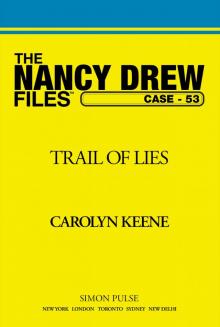 Trail of Lies
Trail of Lies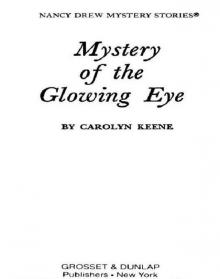 Mystery of the Glowing Eye
Mystery of the Glowing Eye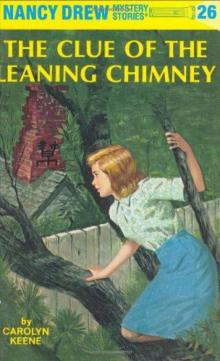 The Clue of the Leaning Chimney
The Clue of the Leaning Chimney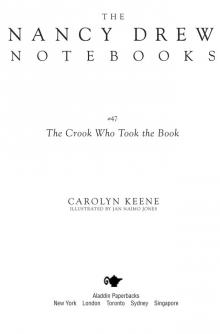 The Crook Who Took the Book
The Crook Who Took the Book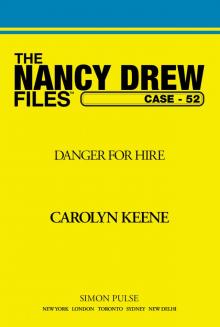 Danger for Hire
Danger for Hire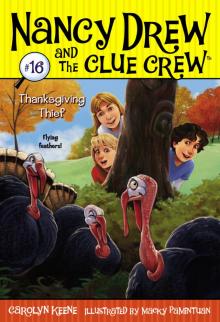 Thanksgiving Thief
Thanksgiving Thief Intruder!
Intruder!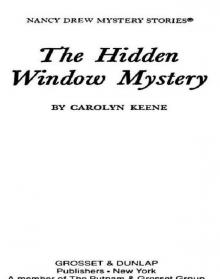 The Hidden Window Mystery
The Hidden Window Mystery Win, Place or Die
Win, Place or Die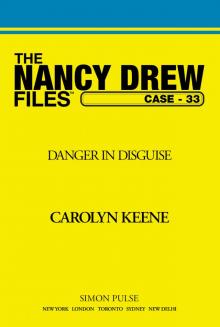 Danger in Disguise
Danger in Disguise The Best Detective
The Best Detective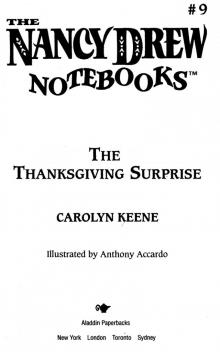 The Thanksgiving Surprise
The Thanksgiving Surprise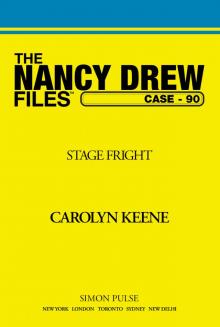 Stage Fright
Stage Fright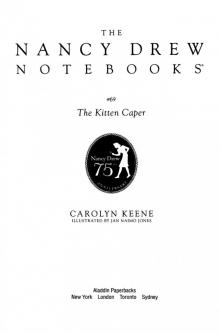 The Kitten Caper
The Kitten Caper Stolen Affections
Stolen Affections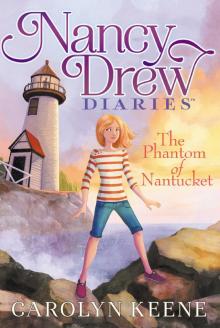 The Phantom of Nantucket
The Phantom of Nantucket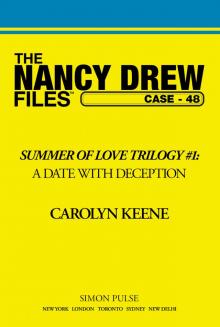 Date With Deception
Date With Deception Cooking Camp Disaster
Cooking Camp Disaster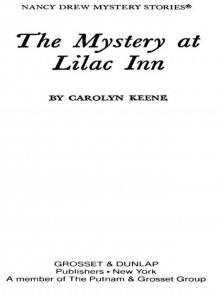 The Mystery at Lilac Inn
The Mystery at Lilac Inn Springtime Crime
Springtime Crime Action!
Action!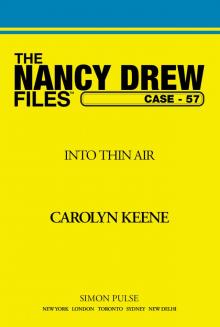 Into Thin Air
Into Thin Air The Chocolate-Covered Contest
The Chocolate-Covered Contest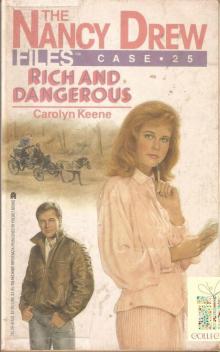 025 Rich and Dangerous
025 Rich and Dangerous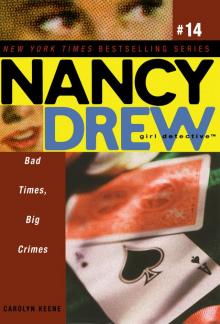 Bad Times, Big Crimes
Bad Times, Big Crimes 078 The Phantom Of Venice
078 The Phantom Of Venice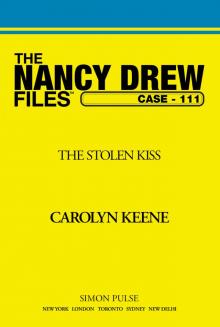 The Stolen Kiss
The Stolen Kiss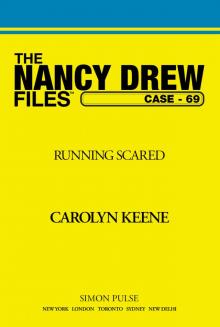 Running Scared
Running Scared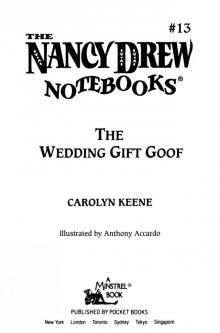 The Wedding Gift Goof
The Wedding Gift Goof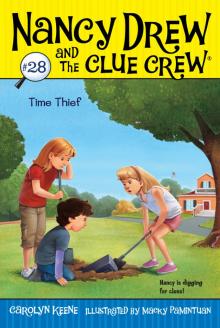 Time Thief
Time Thief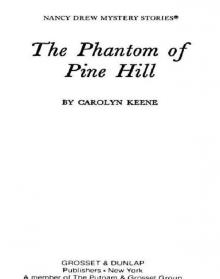 The Phantom of Pine Hill
The Phantom of Pine Hill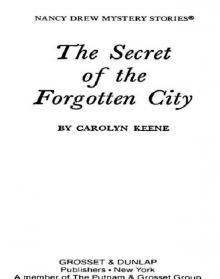 The Secret of the Forgotten City
The Secret of the Forgotten City The Emerald-Eyed Cat Mystery
The Emerald-Eyed Cat Mystery 004 Smile and Say Murder
004 Smile and Say Murder Curse of the Arctic Star
Curse of the Arctic Star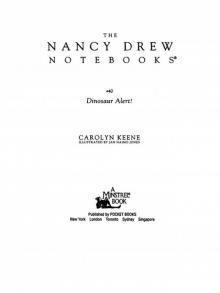 Dinosaur Alert!
Dinosaur Alert!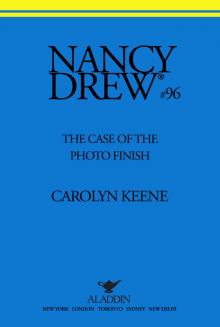 The Case of the Photo Finish
The Case of the Photo Finish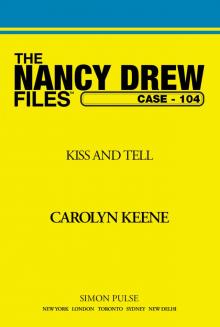 Kiss and Tell
Kiss and Tell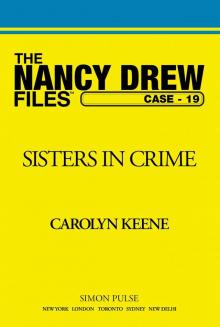 Sisters in Crime
Sisters in Crime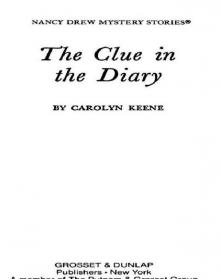 The Clue in the Diary
The Clue in the Diary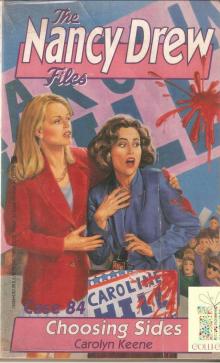 084 Choosing Sides
084 Choosing Sides Haunting of Horse Island
Haunting of Horse Island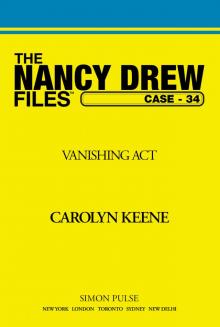 Vanishing Act
Vanishing Act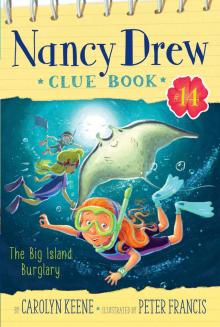 The Big Island Burglary
The Big Island Burglary Danger at the Iron Dragon
Danger at the Iron Dragon Pets on Parade
Pets on Parade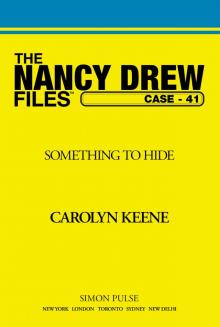 Something to Hide
Something to Hide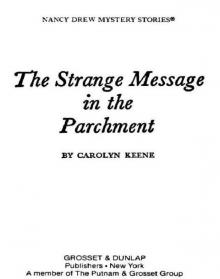 The Strange Message in the Parchment
The Strange Message in the Parchment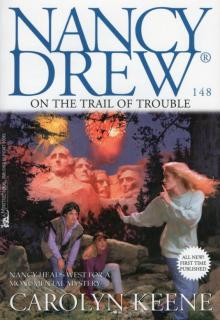 On the Trail of Trouble
On the Trail of Trouble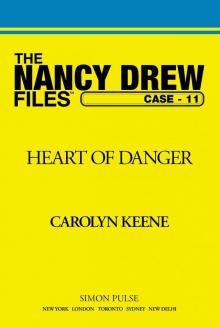 Heart of Danger
Heart of Danger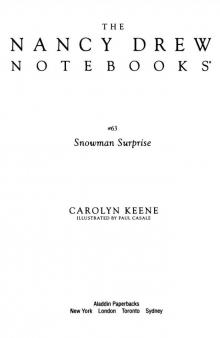 The Snowman Surprise
The Snowman Surprise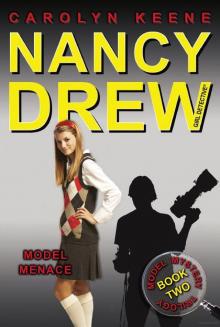 Model Menace
Model Menace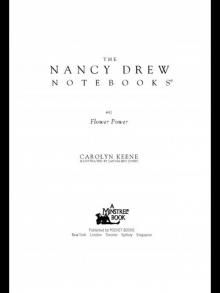 Flower Power
Flower Power The Great Goat Gaffe
The Great Goat Gaffe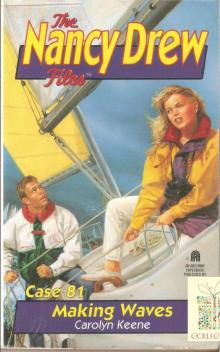 081 Making Waves
081 Making Waves Famous Mistakes
Famous Mistakes The Fashion Disaster
The Fashion Disaster The Clue in the Jewel Box
The Clue in the Jewel Box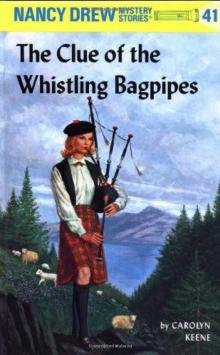 The Clue of the Whistling Bagpipes
The Clue of the Whistling Bagpipes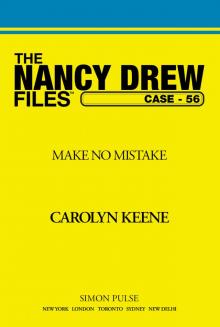 Make No Mistake
Make No Mistake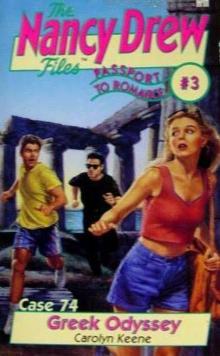 Greek Odyssey
Greek Odyssey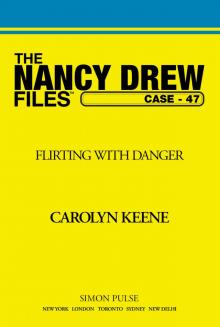 Flirting With Danger
Flirting With Danger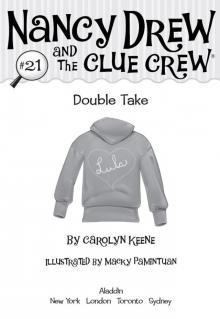 Double Take
Double Take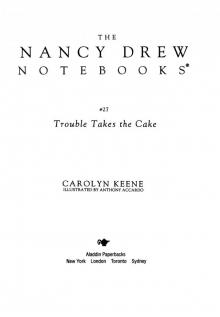 Trouble Takes the Cake
Trouble Takes the Cake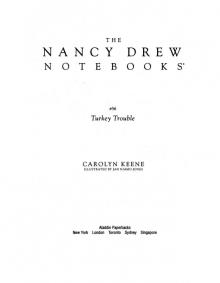 Turkey Trouble
Turkey Trouble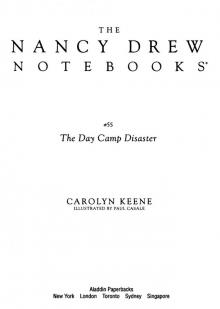 The Day Camp Disaster
The Day Camp Disaster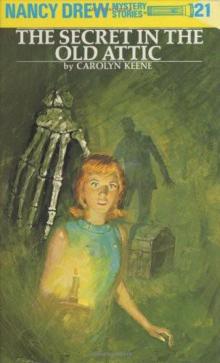 The Secret in the Old Attic
The Secret in the Old Attic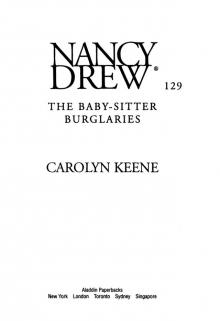 The Baby-Sitter Burglaries
The Baby-Sitter Burglaries Recipe for Murder
Recipe for Murder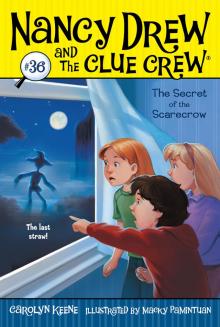 The Secret of the Scarecrow
The Secret of the Scarecrow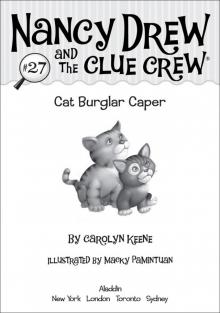 Cat Burglar Caper
Cat Burglar Caper Turkey Trot Plot
Turkey Trot Plot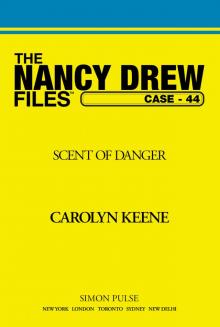 Scent of Danger
Scent of Danger The Clue in the Crossword Cipher
The Clue in the Crossword Cipher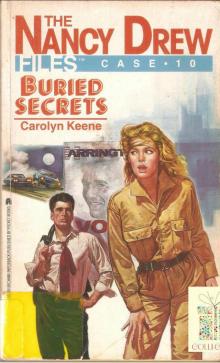 010 Buried Secrets
010 Buried Secrets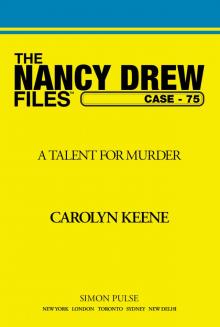 A Talent for Murder
A Talent for Murder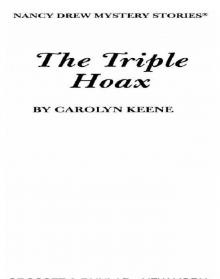 The Triple Hoax
The Triple Hoax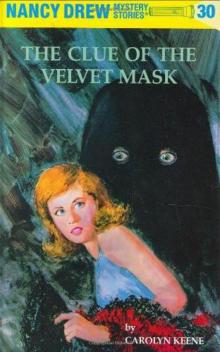 The Clue of the Velvet Mask
The Clue of the Velvet Mask Last Lemonade Standing
Last Lemonade Standing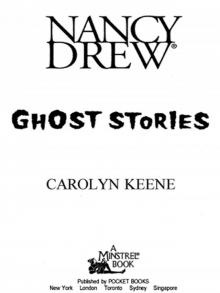 The Ghost of Blackwood Hall
The Ghost of Blackwood Hall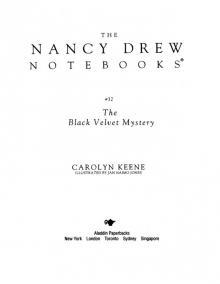 The Black Velvet Mystery
The Black Velvet Mystery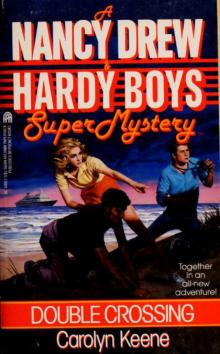 Double Crossing
Double Crossing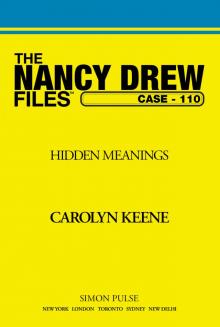 Hidden Meanings
Hidden Meanings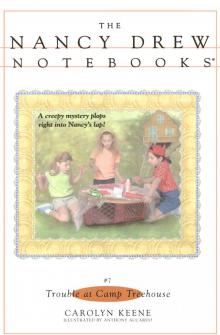 Trouble at Camp Treehouse
Trouble at Camp Treehouse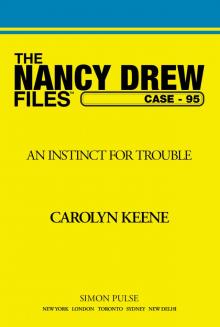 An Instinct for Trouble
An Instinct for Trouble 037 Last Dance
037 Last Dance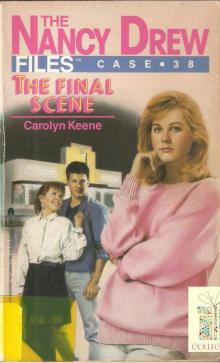 038 The Final Scene
038 The Final Scene Duck Derby Debacle
Duck Derby Debacle The Pumpkin Patch Puzzle
The Pumpkin Patch Puzzle Hidden Pictures
Hidden Pictures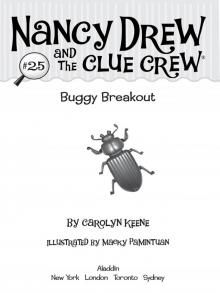 Buggy Breakout
Buggy Breakout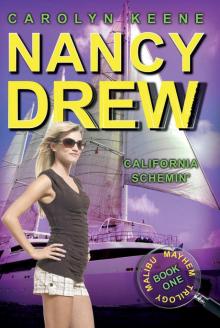 California Schemin'
California Schemin'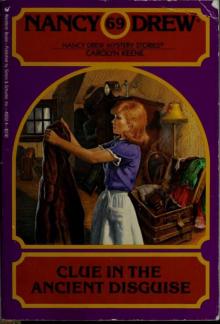 Clue in the Ancient Disguise
Clue in the Ancient Disguise Case of the Sneaky Snowman
Case of the Sneaky Snowman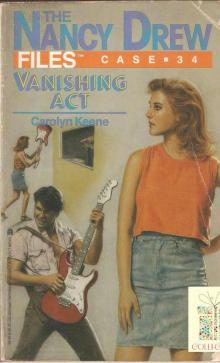 034 Vanishing Act
034 Vanishing Act A Script for Danger
A Script for Danger The Flower Show Fiasco
The Flower Show Fiasco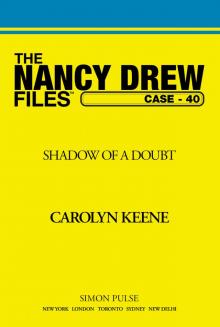 Shadow of a Doubt
Shadow of a Doubt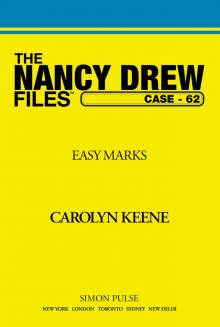 Easy Marks
Easy Marks Alien in the Classroom
Alien in the Classroom Ghost Stories, #2 (Nancy Drew)
Ghost Stories, #2 (Nancy Drew)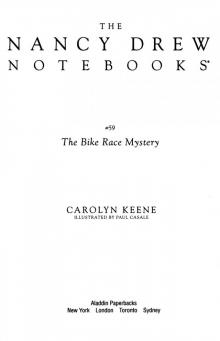 The Bike Race Mystery
The Bike Race Mystery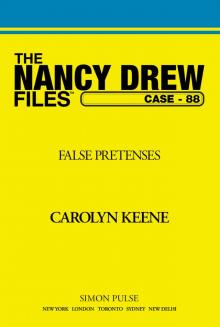 False Pretenses
False Pretenses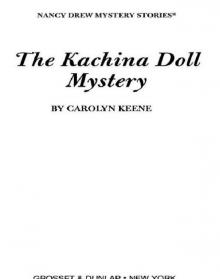 The Kachina Doll Mystery
The Kachina Doll Mystery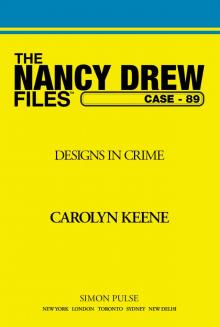 Designs in Crime
Designs in Crime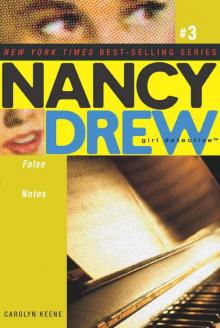 False Notes
False Notes The Haunted Carousel
The Haunted Carousel Bad Day for Ballet
Bad Day for Ballet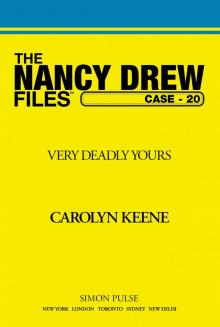 Very Deadly Yours
Very Deadly Yours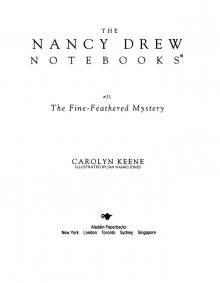 The Fine-Feathered Mystery
The Fine-Feathered Mystery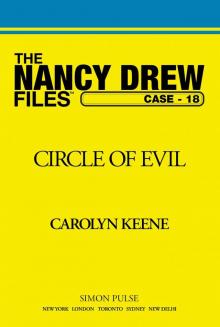 Circle of Evil
Circle of Evil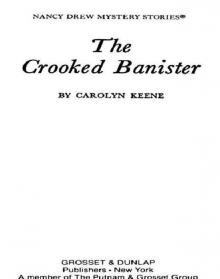 The Crooked Banister
The Crooked Banister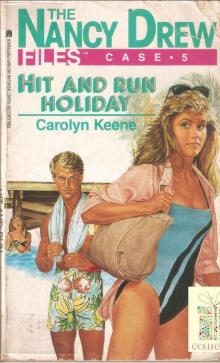 005 Hit and Run Holiday
005 Hit and Run Holiday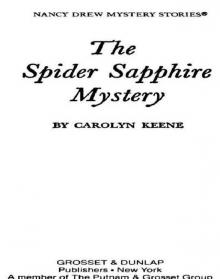 The Spider Sapphire Mystery
The Spider Sapphire Mystery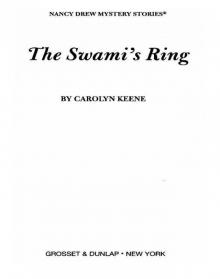 The Swami's Ring
The Swami's Ring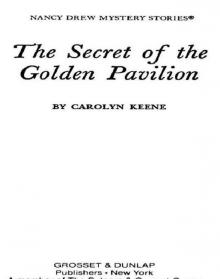 The Secret of the Golden Pavilion
The Secret of the Golden Pavilion Recipe for Trouble
Recipe for Trouble Betrayed by Love
Betrayed by Love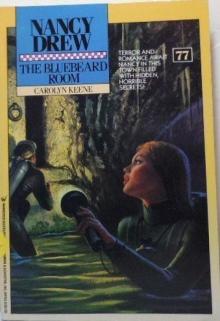 The Bluebeard Room
The Bluebeard Room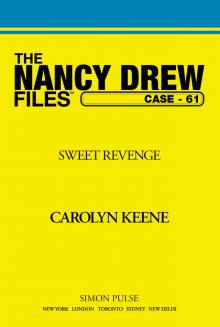 Sweet Revenge
Sweet Revenge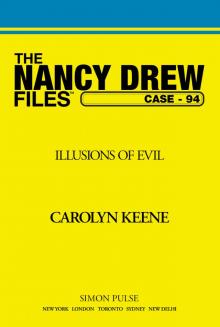 Illusions of Evil
Illusions of Evil 006 White Water Terror
006 White Water Terror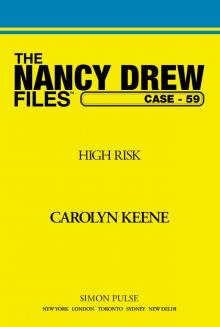 High Risk
High Risk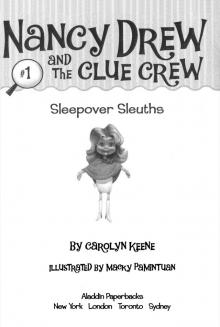 Sleepover Sleuths
Sleepover Sleuths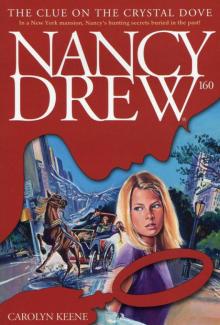 The Clue on the Crystal Dove
The Clue on the Crystal Dove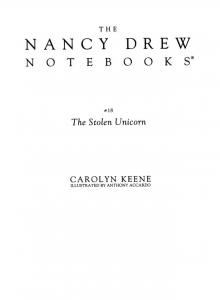 The Stolen Unicorn
The Stolen Unicorn The Professor and the Puzzle
The Professor and the Puzzle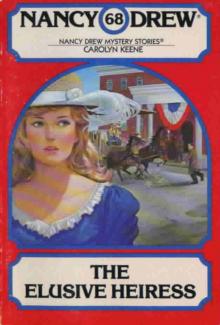 The Elusive Heiress
The Elusive Heiress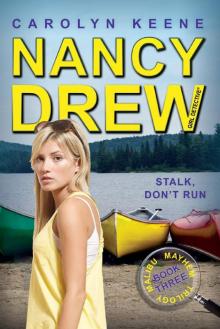 Stalk, Don't Run
Stalk, Don't Run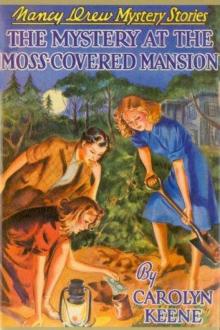 The Mystery at the Moss-Covered Mansion
The Mystery at the Moss-Covered Mansion The Tortoise and the Scare
The Tortoise and the Scare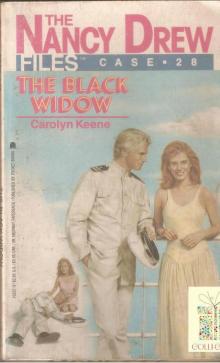 028 The Black Widow
028 The Black Widow Big Worry in Wonderland
Big Worry in Wonderland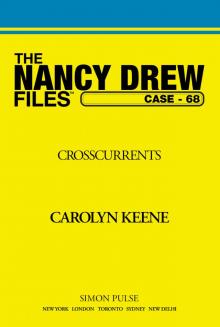 Crosscurrents
Crosscurrents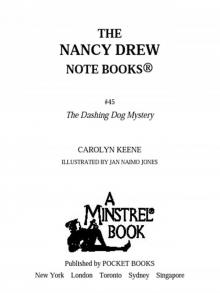 The Dashing Dog Mystery
The Dashing Dog Mystery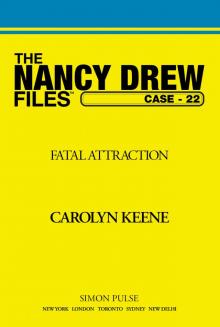 Fatal Attraction
Fatal Attraction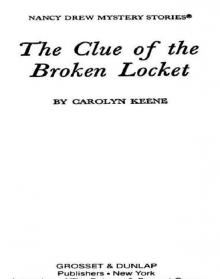 The Clue of the Broken Locket
The Clue of the Broken Locket The Stinky Cheese Surprise
The Stinky Cheese Surprise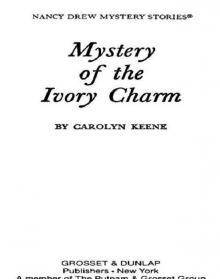 Mystery of the Ivory Charm
Mystery of the Ivory Charm A Race Against Time
A Race Against Time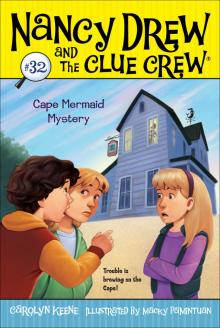 Cape Mermaid Mystery
Cape Mermaid Mystery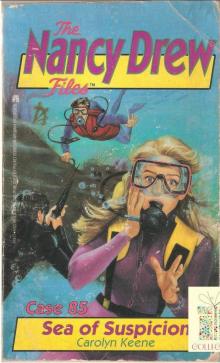 085 Sea of Suspicion
085 Sea of Suspicion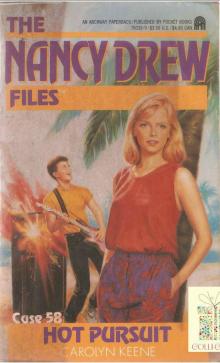 058 Hot Pursuit
058 Hot Pursuit The Secret in the Spooky Woods
The Secret in the Spooky Woods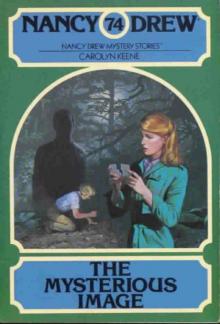 The Mysterious Image
The Mysterious Image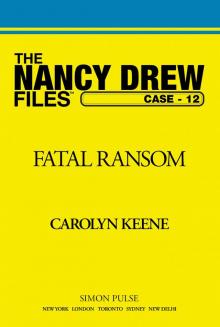 Fatal Ransom
Fatal Ransom The Stolen Show
The Stolen Show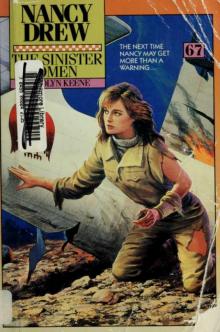 The Sinister Omen
The Sinister Omen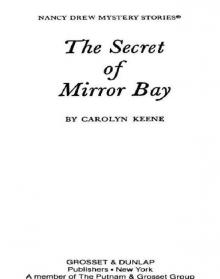 The Secret of Mirror Bay
The Secret of Mirror Bay Rendezvous in Rome
Rendezvous in Rome The Perfect Plot
The Perfect Plot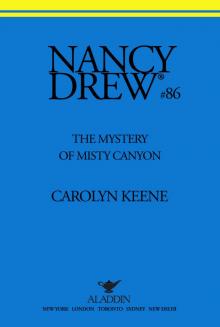 The Mystery of Misty Canyon
The Mystery of Misty Canyon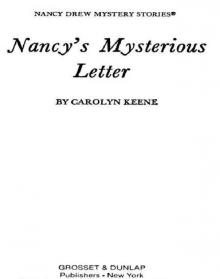 Nancy's Mysterious Letter
Nancy's Mysterious Letter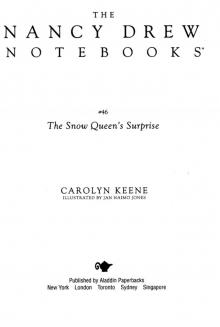 The Snow Queen's Surprise
The Snow Queen's Surprise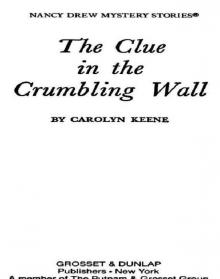 The Clue in the Crumbling Wall
The Clue in the Crumbling Wall Dare at the Fair
Dare at the Fair Scream for Ice Cream
Scream for Ice Cream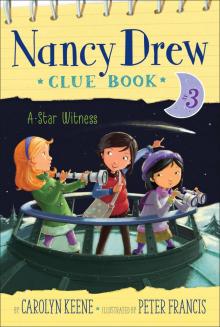 A Star Witness
A Star Witness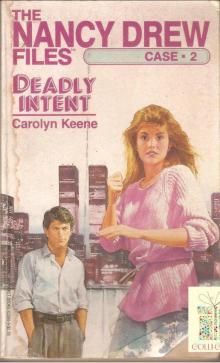 002 Deadly Intent
002 Deadly Intent Museum Mayhem
Museum Mayhem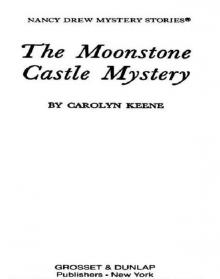 The Moonstone Castle Mystery
The Moonstone Castle Mystery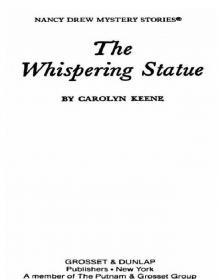 The Whispering Statue
The Whispering Statue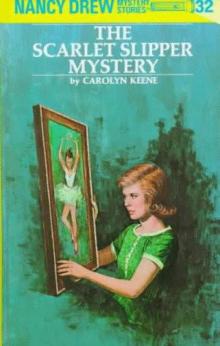 The Scarlet Slipper Mystery
The Scarlet Slipper Mystery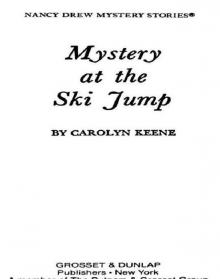 Mystery at the Ski Jump
Mystery at the Ski Jump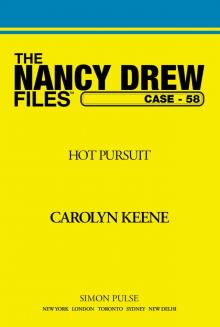 Hot Pursuit
Hot Pursuit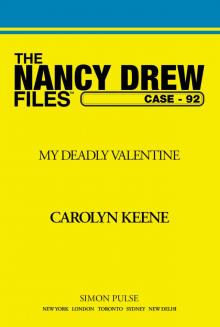 My Deadly Valentine
My Deadly Valentine The Silent Suspect
The Silent Suspect Deep Secrets
Deep Secrets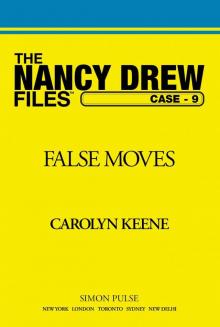 False Moves
False Moves The Zoo Crew
The Zoo Crew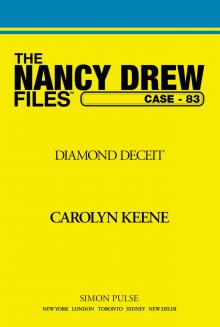 Diamond Deceit
Diamond Deceit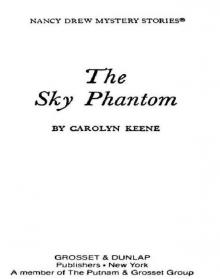 The Sky Phantom
The Sky Phantom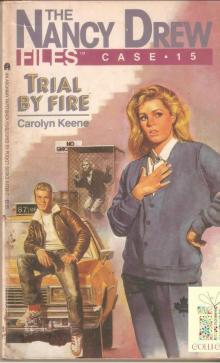 015 Trial by Fire
015 Trial by Fire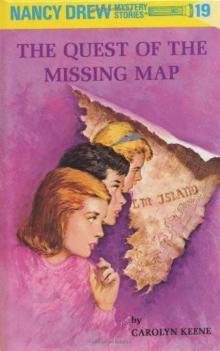 The Quest of the Missing Map
The Quest of the Missing Map Babysitting Bandit
Babysitting Bandit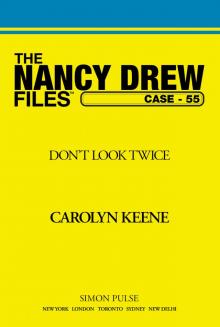 Don't Look Twice
Don't Look Twice Never Say Die
Never Say Die The Soccer Shoe Clue
The Soccer Shoe Clue Pool Party Puzzler
Pool Party Puzzler The Case of the Lost Song
The Case of the Lost Song The Apple Bandit
The Apple Bandit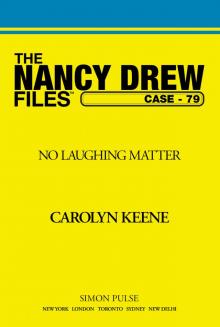 No Laughing Matter
No Laughing Matter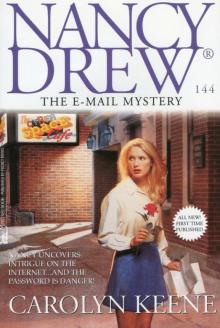 The Thirteenth Pearl
The Thirteenth Pearl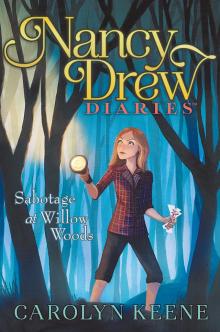 Sabotage at Willow Woods
Sabotage at Willow Woods Butterfly Blues
Butterfly Blues Model Crime 1
Model Crime 1 The Nancy Drew Sleuth Book
The Nancy Drew Sleuth Book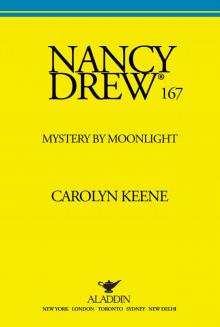 Mystery by Moonlight
Mystery by Moonlight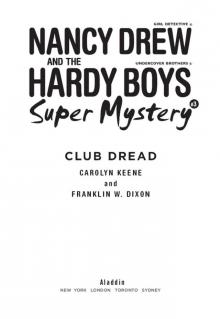 Club Dread
Club Dread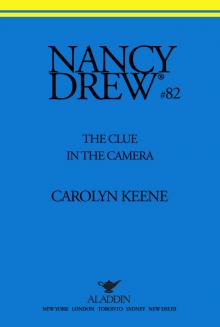 The Clue in the Camera
The Clue in the Camera 118 Betrayed By Love
118 Betrayed By Love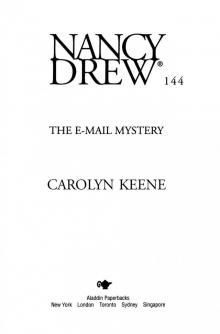 The E-Mail Mystery (Nancy Drew Book 144)
The E-Mail Mystery (Nancy Drew Book 144)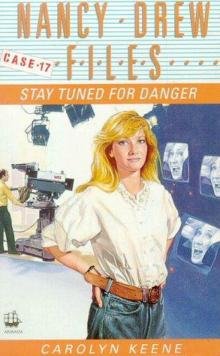 Stay Tuned for Danger: Circle of Evil
Stay Tuned for Danger: Circle of Evil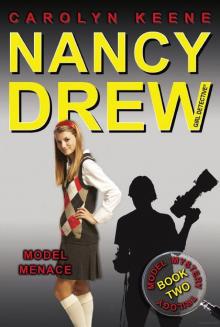 Model Menace 2
Model Menace 2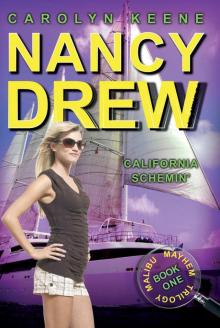 California Schemin': Book One in the Malibu Mayhem Trilogy
California Schemin': Book One in the Malibu Mayhem Trilogy Zoo Clue (Nancy Drew Notebooks)
Zoo Clue (Nancy Drew Notebooks)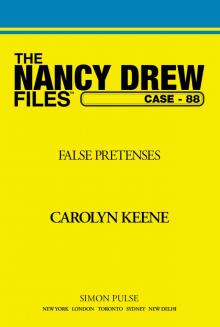 False Pretences
False Pretences 151 The Chocolate-Covered Contest
151 The Chocolate-Covered Contest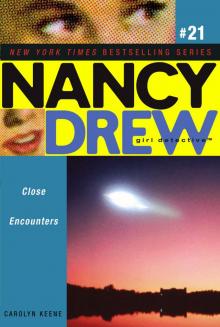 Close Encounters
Close Encounters The Emeral-Eyed Cat Mystery
The Emeral-Eyed Cat Mystery Boo Crew
Boo Crew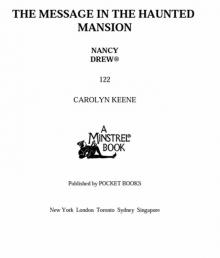 The Message in the Haunted Mansion (Nancy Drew Book 122)
The Message in the Haunted Mansion (Nancy Drew Book 122) A Nancy Drew Christmas
A Nancy Drew Christmas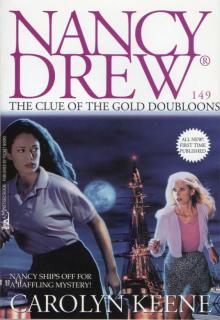 149 The Clue Of The Gold Doubloons
149 The Clue Of The Gold Doubloons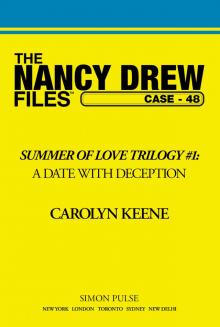 A Date with Deception
A Date with Deception 101 The Picture of Guilt
101 The Picture of Guilt The Secret in the Spooky Woods (Nancy Drew Notebooks Book 62)
The Secret in the Spooky Woods (Nancy Drew Notebooks Book 62)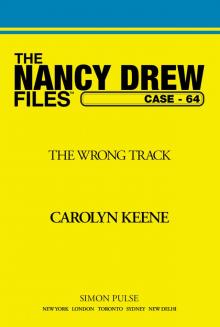 The Wrong Track
The Wrong Track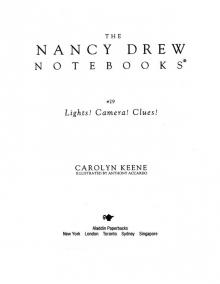 Lights! Camera! Clues!
Lights! Camera! Clues!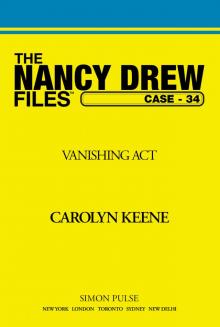 The Vanishing Act
The Vanishing Act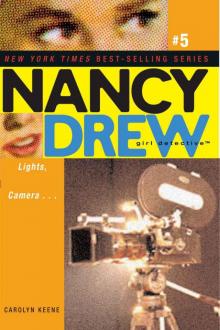 Lights, Camera . . .
Lights, Camera . . . Model Suspect 3
Model Suspect 3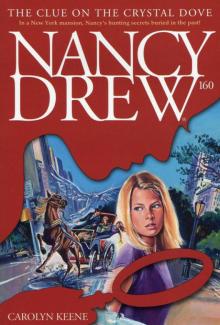 160 The Clue On The Crystal Dove
160 The Clue On The Crystal Dove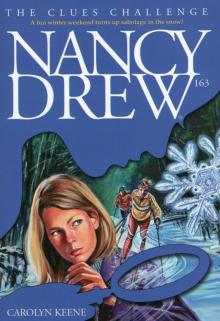 163 The Clues Challenge
163 The Clues Challenge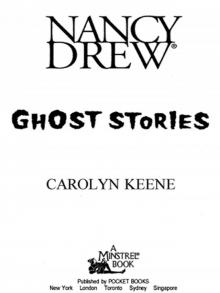 Ghost Stories (Nancy Drew)
Ghost Stories (Nancy Drew)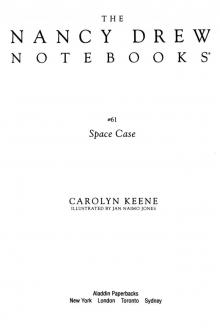 Space Case (Nancy Drew Notebooks Book 61)
Space Case (Nancy Drew Notebooks Book 61)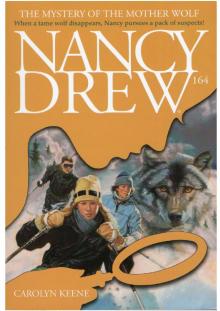 164 The Mystery Of The Mother Wolf
164 The Mystery Of The Mother Wolf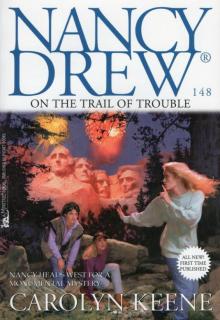 148 On The Trail Of Trouble
148 On The Trail Of Trouble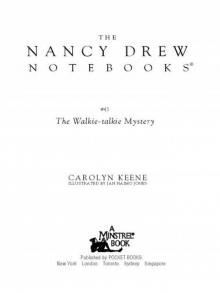 The Walkie-Talkie Mystery
The Walkie-Talkie Mystery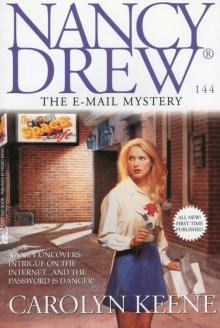 The E-Mail Mystery
The E-Mail Mystery Intruder (Nancy Drew (All New) Girl Detective)
Intruder (Nancy Drew (All New) Girl Detective)![The Stolen Relic [Nancy Drew Girl Detective 007] Read online](http://i1.bookreadfree.com/i2/04/11/the_stolen_relic_nancy_drew_girl_detective_007_preview.jpg) The Stolen Relic [Nancy Drew Girl Detective 007]
The Stolen Relic [Nancy Drew Girl Detective 007] 105 Stolen Affections
105 Stolen Affections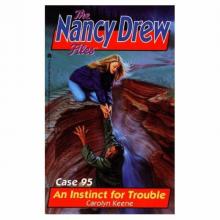 An Instict for Trouble
An Instict for Trouble 161 Lost In The Everglades
161 Lost In The Everglades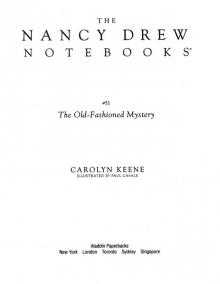 The Old-Fashioned Mystery
The Old-Fashioned Mystery Perfect Plot
Perfect Plot